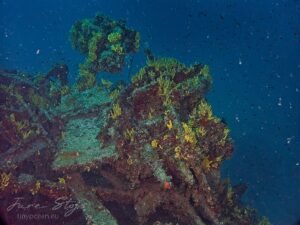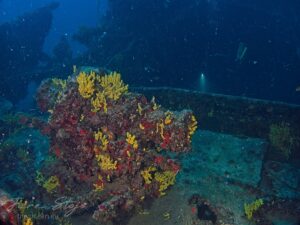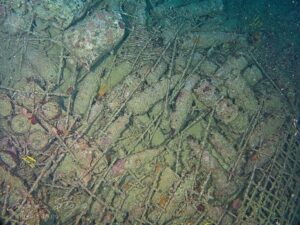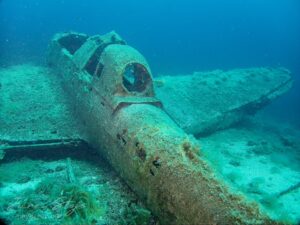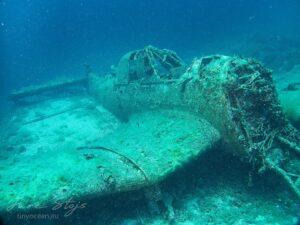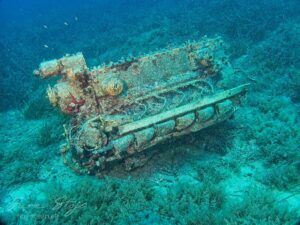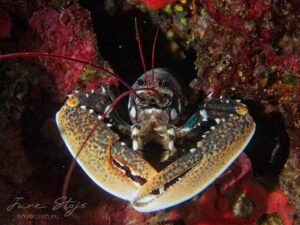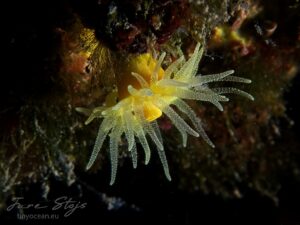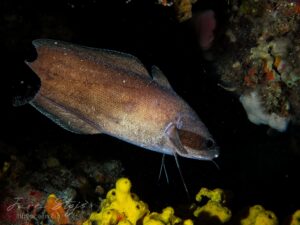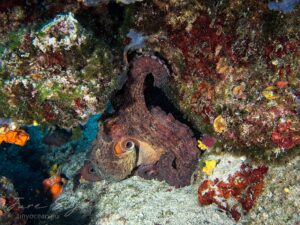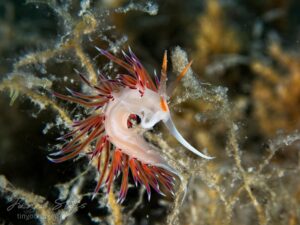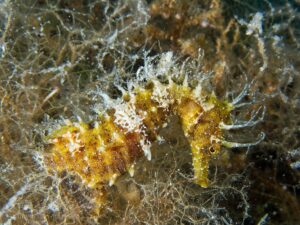At the end of June we went on a short scuba diving holiday on the island of Murter, Croatia. We were there for 5 days and did a total of 8 dives. We visited different locations near and not so near the island. We also went on two wreck dives, the Francesca di Rimini and Junkers Ju 87 “Stuka”.
There was a bit of wind the first two days but that wasn’t an issue. If anything it kept the heat manageable. Next couple of days got quite hot. Luckily the water at depth had around 15°C so we could cool off.
Wreck dives
The first one was Francesca di Rimini. This one is a bit more advanced due to depth. If you can, an additional deco stage tank can be very helpful to maximize your time on the wreck. Because I mainly do macro photography and I don’t have strong enough strobes I don’t have good quality pictures. Still there are a few usable ones.
The second wreck was Junkers Ju 87 “Stuka”. This one is not as deep and the plane is not large. The original motor is also close to it. Initially it was further away but it was moved to be close to the plane. Recently, they installed zinc anodes for protection of the wreck.
This time I also tried to make a video you can see here:
Other locations
We didn’t repeat any location which was quite nice. Overall there was plenty of life everywhere and we saw quite a lot of interesting things. During the dives I also took a few pictures.
When I am waiting for the 3 minute safety stop to finish and if I have extra air, I look in the shallow water for animals I would normally not photograph. This time I found a tompot blenny (Parablennius gattorugine) and a black-faced blenny (Tripterygion delaisi) which were willing to stay still for a bit of time.
We also found a smaller common lobster (Homarus gammarus) and European spiny lobster (Palinurus elephas).
The sunset cup coral (Leptopsammia pruvoti) and the yellow cluster anemone (Parazoanthus axinellae) are often found at the edge of holes. This makes it easy to take pictures with very dark backgrounds.
For one location we were told there would be moray eels and they were certainly there. The common species is the Mediterranean mooray (Muraena helena). We also saw a forkbeard (Phycis phycis) on a few occasions.
Octopuses are always fascinating. The common octopus (Octopus vulgaris) is well, the most common. This time we saw a few that were not hidden in their dens, but moved around on the reef. I almost lost a strobe to the one on the right as it started to gain interest in it and grabbed it with two tentacles. It was a fairly big and had quite a strong grip.
There were multiple nudibranchs but the most common this time was Cratena peregrina. On the first picture you can see them mating.
For the end, a few best pictures in my opinion.
I didn’t expect to see a long-snouted seahorse (Hippocampus guttulatus) so I was really excited when I found it.
While we did see a few yellowbelly groupers (Epinephelus marginatus), they usually hide and look at you from afar. I managed to photograph this one swimming away to another hiding place.
Luisella babai was a new sea slug for me which was quite exciting.
And lastly Antiopella cristata is a sea slug I don’t see often and which I am always extremely glad to find.
Conclusion
There was plenty of life, more at some locations than others. Overall there was a chance to see a lot.
I really enjoyed the short scuba diving trip on Murter and I would happily do it again sometime if I get the chance.

